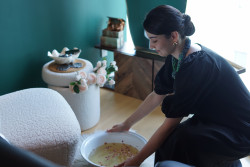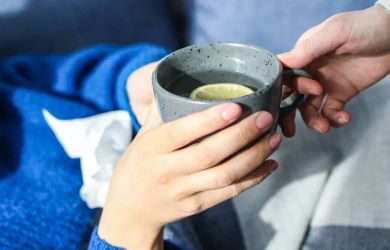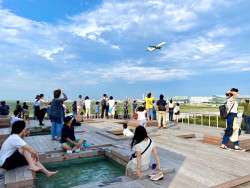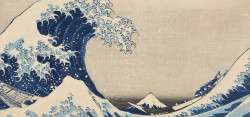
Originally published on metropolis.co.jp on July 2011

Cuts of Meat
Just like Japanese beef, basashi comes in various cuts, each with their own characteristic flavor and texture. Rest assured that nothing goes to waste and yes, you can even eat the penis. Below is a sampling of cuts.
Bara: The rib cut. Lined with a thin layer of pear-white fat, it is both delicious and relatively affordable.
Tategami: This layer of fat found around the head and neck has been dubbed “horse cheese” by someone who clearly didn’t understand English nuance. In reality, horse butter might be a better description for this soft, creamy, collagen-rich cut.
Horumon: Intestines and the like—tasty when stewed or cooked but also surprisingly delicious raw.
Nekkozashi: Sliced aorta. Eaten raw or cooked. Mild flavor and crunchy texture, somewhat reminiscent of cartilage.
Shoulder roast: Fabulously marbled tender shimofuri makes this a pricey cut.
Filet: A lean cut excellent for high-grade steaks.
Horse meat. The English language doesn’t have an elegant culinary term such as “beef” to describe it, perhaps betraying its underlying taboo in the Anglosphere. This is unfortunate since baniku, as it is known in Japan, is both healthier and tastier than beef. And while baniku occupies a special place in Japanese food culture, the country is by no means a major producer. Neighboring China is the world’s biggest, with Japan not even making the top ten. But, like many things in Japan, the emphasis is here on quality, not quantity, and the Japanese produce some of the tastiest meat in the world. If the Chinese are known for “eating anything that moves” then the Japanese could be said to “eat anything that moves raw” and baniku is no exception. It is basashi, or baniku sashimi, with its mellow taste and elegant texture, that should be resolutely avoided by any gourmand with even a hint of addictive personality disorder. I learned this the hard way on a recent trip to Kyushu’s Kumamoto prefecture, Japan’s iconic basashi region—and as I write this I am jonesing to return for more of this delectable treat.
Although Nagano and nearby Oita prefectures are also known for basashi, Kumato’s geography and culinary culture makes it stand out as both a place to produce and consume the meat. Basashi takes its place among a brilliant rainbow of sensory delights, from the sweeping slopes of Mt. Aso, where horses have been raised for centuries, to the region’s kyodo ryori, or local cuisine—which includes such dishes as karashi renkon (deep fried lotus root with mustard miso), hitomoji no guruguru (rolled green onions with yuzu miso) and boldly flavored rice shochu.
While basashi is usually sliced into thin morsels and eaten with sweet shoyu, grated ginger, a garnish of shiso and shredded daikon; the uses of baniku aren’t just confined to the raw. The famous Umazakura on the city’s main drag, Shimodori, offers almost anything the creative equivore could imagine. From yakitori and yakiniku to shabu-shabu and fried rice, you name it, and it can accompany baniku. How about a baniku pizza? It’s also on the menu.
Speaking of creative uses of horse meat, I am on a personal quest to find a “basashi burger” and had all my expectations exceeded by the delicious specimen found at Gull, a quaint restaurant owned by Akira Oki and his wife, both of whom spent a number of years living in Canada and have a keen sense for foreign tastes. Nestled between a basil bagel and best enjoyed with the more subtle flavor of tartar sauce, Oki’s Sakura Burger is both lighter and less gamey than beef.
The term “sakura” has become synonymous with basashi as it refers to the delicate pink color of the meat. For a more Japanese spin on sakura I visit the well-heeled Suganoya on Kumamoto’s Ginza-dori for some basashi sushi. Between the tender nigiri and subtle flavors of the sakura-natto gunkanmaki, I find myself having an “I-can’t-believe-it’s-not-fish” experience. Paired with a glass of shochu on the rocks, I am in rapture.

Shochu is the drink of choice in Kumamoto and I drop by Okadaya off Shimodori to sample some of their vast collection of artisanal booze. Mr. Hashimura, the outgoing and knowlegable owner, is happy to guide me through the dozens of bottles of Kumajochu—or Kumamoto shochu—on the shelf. The izakaya also serves excellent food and I sample some baraniku basashi, a flavorful rib cut framed by lines of silky fat. For a nightcap, I stop by Jeff’s World Bar, owned by American expat Jeff Morrow. Although this is much more of a pub than a dining establishment, the affordable prices (¥3,000 lets you drink till dawn) are a good way to get intimately aquainted with Kumajochu and Jeff tells me that they will be adding their own basashi pizza to the menu in the near future. As I unwind with a glass of shiro on the rocks I realize my love-affair with sakura will be long and pricey. A look at the way the horses are raised gives an idea as to why.
“So where are you from?”
“Tokyo, and before that America,” I reply.
“America, huh?” There is a pause. “There are a lot of animal rights activists in your country.”

I can’t deny it. Instead, I casually mention the luscious slices of basashi that I had for dinner the night before at the popular Kenzo, and after a couple more minutes of testing the waters it seems the owner of Koga Farms is satisfied I am not here to ambush him. I am actually very lucky: between the reputation of sensationalist documentaries like The Cove and the recent scare over E. coli poisoning at yakiniku restaurants, none of Kumamoto’s other horse ranchers are willing to speak with me. But Koga Farms is a bit different.
It’s a smaller, family-run operation that prides itself on quality and is considered to raise some of the best horse meat in the region. In fact, owner Kiyokazu Koga proudly explains that they are one of the very few ranches that have Kumamoto born and raised horses. With horses needing over ¥4,000 worth of proprietary feed per day, most horse ranches in Japan import young horses from abroad by cargo plane (Canada, the US and Australia are the big suppliers) and then raise them to maturity in Japan for approximately three to four months. This is the type of meat you are likely to find in most restaurants, and while Koga admits that many of his horses are from Canada as well, the crème-de-la-crème of his operation were born and raised locally, including some on the pastoral expanses of nearby Mt. Aso.

Koga is clearly concerned about the treatment of his animals and a visit to his ranch shows the careful conditions under which they are kept. Despite housing hundreds of animals, the ranch is clean and not unpleasant smelling. Horses have space and are able to interact with each other—as providing a low-stress environment is important in developing high-quality meat. With mature horses selling for around the price of a small car and choice cuts of meat going for over ¥20,000/kg it’s understandable that they take good care of their investment. I ask Koga about the future prospects of the basashi market and, like in many industries, low-cost foreign competition is casting its shadow on Japan’s traditional horse ranching methods, though there is growing demand for the unmatched quality of its meat.
Between its culinary delights, rich yet affordable drinking culture and natural wonders such as volcanically active Mt. Aso (see Travel), Kumamoto makes a great place to take respite from Tokyo’s intensity. In addition to the majors, Kumamoto is served by two low-cost airlines (Skynet Asia Airways and Skymark Airlines) and tickets can often be found for less than ¥15,000 one way. Overall lower lodging and transportation prices compared to Tokyo mean you’ll be able to use more of your money for succulent basashi, which is a good thing, because after trying it you’ll have a hard time thinking about anything else. For those looking for a taste of basashi closer to home see the review of Tokyo’s Minoya, on page 27.
More Information
Kenzo: www.basashi-kenzo.com
Suganoya: http://service.suganoya.com
Umazakura: www.umasakura.com
Gull: www.yokablog.jp/blog/purin64
Jeff’s World Bar: http://jeffsworldbar.com
Koga Farms: www.the2929.com
Skynet Asia Aiways: www.skynetasia.co.jp
Skymark Airlines: www.skymark.co.jp
History
While it is believed that horses were introduced to Kyushu from Korea more than 2000 years ago, the orgins of modern-day horse consumption in the region are a bit foggy. Eiko Honda, Professor of Nutrition at the Prefectural University of Kumamoto tells me the most probable theory. This is that Kato Kiyomasa, a daimyo of Higo (now Kumamoto prefecture) introduced the practice of eating horse meat in the late 1500s as a response to food shortages during the Seven-Year War (1592-1598)—a devastating attempt to conquer Korea’s Chosun dynasty. It’s interesting to note that the consumption of four-legged animals was restricted by Buddhist dictate for nearly 1,000 years until the Meiji Restoration in 1868. However, archeological evidence shows that by the Edo Period (1603-1868), deer, wild boar, bears, dogs, monkeys and horses were being eaten in considerable quantities. Thus, it would not have been unresonable for a daimyo of the era to turn to horse meat in times of desperation. Regardless of the orgin, it wasn’t really until the end of World War II that Kumamoto and the rest of Japan witnessed the start of a basashi boom.
Kumajochu

While Kumamoto does have a few micro-breweries, as well as a huge Suntory brewery that provides free beer at the airport business lounge, it’s the region’s shochu that really shines. Made from rice, Kumajochu is capable of such a variety of tastes and fragrances that even those who consider shochu to be nothing more than “watery vodka” will have to reconsider their position. Some Kumajochu is even aged in oak, leading to the moniker “Kumamoto whiskey.” In addition to rice-based shochu there is also some excellent imo, or sweet potato, shochu made in the region. For those immune to hangovers, try drinking from one of Kumamoto’s traditional shochu cups—designed so they can only be put down empty.
A sampling of Kumajochu follows:
Shiro (しろ): A smooth, affordable rice-based shochu.
Kawabe (川辺): Fragrant yet drinkable rice-based shochu.
Banryoku (万緑): A rice-based shochu selected by JAL for in-flight service.
Torikai (鳥飼): An award-winning kumajochu with a fruity aftertaste.







